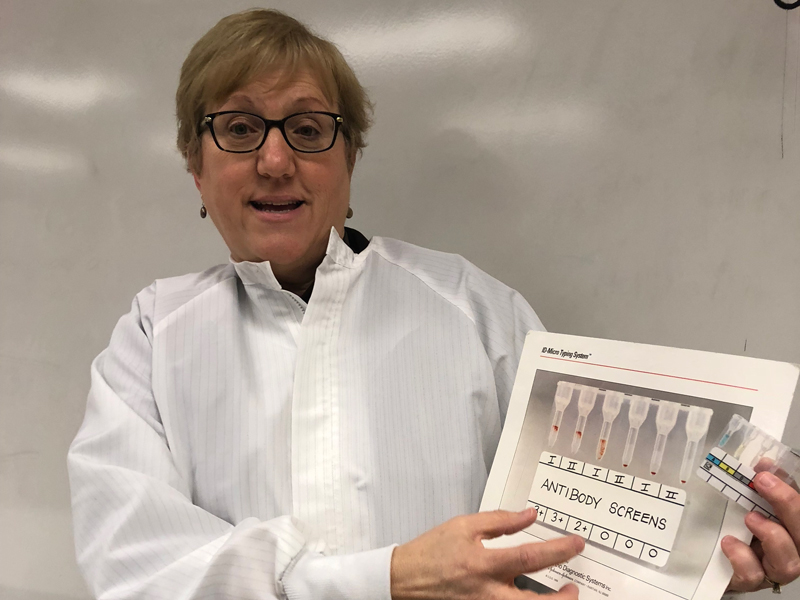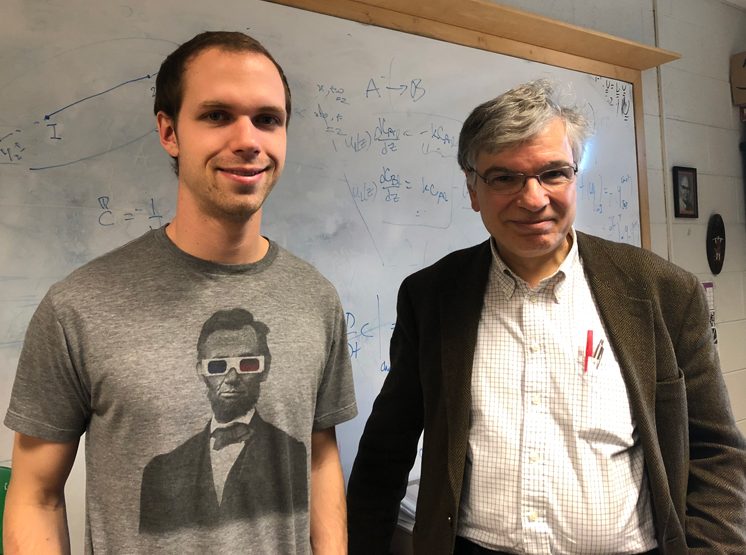


Blood donations
Photo by Carlett Spike January 18, 2018
UD faculty explain research, the importance of volunteers
January is National Blood Donor month. Although donating is a relatively simple process, of the those eligible to give blood, less than 10 percent choose to do so.
Why does it matter so much? Leslie Allshouse, director of the University of Delaware’s Medical Laboratory Program, knows firsthand how often blood is needed. She worked in a transfusion service laboratory for more than 30 years.
“There’s blood shortages all the time,” Allshouse said. “So it’s just so important for people to go and donate. I’m a lifelong donor. I’ve been donating since I started here as an undergrad, and I pretty much donate probably four times a year.”
Allshouse majored in medical technology as a undergraduate at the University. She was interested in trauma medicine. Although she was already in the major, her brother needed many blood products after a severe car accident, and she said that may have also impacted her ultimate career decision.
She completed her undergraduate studies in 1983 and went on to work in a transfusion service lab in a Wilmington hospital. It was her job to analyze blood and match it to patients in need.

“It's always very fulfilling when you get all that work done and find that blood product for that patient who has that special need,” Allshouse said. “I love the teamwork and really like the excitement.”
Now in her role as director and senior instructor, she teaches students the processes and necessary steps from the moment blood is donated to when it is ready to be transferred to someone else.
Allshouse noted this is an important field with excellent job prospects. Of the 31 students in UD’s 2017 graduating class, 27 secured jobs within three months of graduation.
While saving lives is the primary use of blood donations, it is also needed for research.
Last year, Antony Beris and Jeffrey Horner were part of a team of UD researchers that submitted their latest findings on blood. Beris, Arthur B. Metzner Professor in the Department of Chemical and Biomolecular Engineering, and Horner, a doctoral candidate in the College of Engineering, study how blood flows and behaves.
Their research, which was funded by the National Science Foundation and conducted in collaboration with UD faculty members Donna Woulfe and Norman Wagner, found the ideal temperature and span of time researchers can inspect a sample of blood before it spoils. Based on these findings, they hope to offer new guidelines for others doing research.
“Blood is a complicated system,” Beris said. Blood has been around as long as people have, of course, but there are still many unknowns.
The duo was also part of a different research team that developed a new model that better captures the characteristics of human blood. Their hope is that this new model may one day be used as a diagnostic tool to detect early signs of diseases.
The possibilities go on, as Allshouse, Beris and Horner all mentioned a larger goal for many blood researchers — to one day develop artificial blood.
“There can be a lot of pressure when working with blood,” Horner said. There is not an endless supply, so wasting samples can be costly and impede progress. “Blood is not an easy fluid to work with. It changes a lot and can be dangerous if you are exposed to diseases.”
Blood research brings together the minds of people from different disciplines, like biology and engineering. Beris and Horner are excited for the future of blood research, but noted donors make it all possible.
“The impact of volunteers is so important,” Beris said. “We could not do our research without them.”
How to donate
In the United States, someone is in need of blood every two seconds, so there is high demand for blood, but often short supply.
The American Red Cross recently issued a call to action for more blood and platelet donations. The message states, “Severe winter weather has had a tremendous impact on blood donations already this year, with more than 150 blood drives forced to cancel causing over 5,500 blood and platelet donations to go uncollected.”
The American Red Cross and the Blood Bank of Delmarva are the biggest collectors near the University. If you are interested in donating, visit their websites to schedule an appointment and fill out the necessary forms.
Contact Us
Have a UDaily story idea?
Contact us at ocm@udel.edu
Members of the press
Contact us at 302-831-NEWS or visit the Media Relations website

